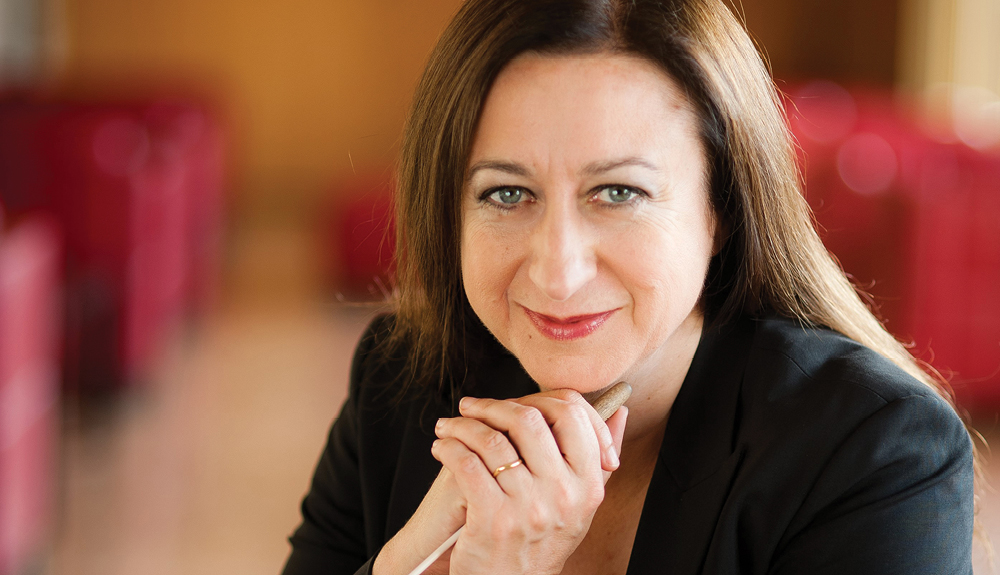
Blazing Sample of Wagner Opera
It was the Wagner Rush or the Wagner High, hitting again with flashes of lightning, as overwhelming as it is dazzling. It was just a one-hour sampler (out of that 15-hour “Ring” tetralogy), but you wonder if you could ever stay standing coherently and rationally after a full 15-hour, 4-day hit.
Well, there’s some semblance of sanity locally, as there are no plans anywhere on the horizon for the “Ring” being staged at the S.F. Opera; so the S.F. Symphony’s Act One of “Die Walküre” with its all-star trio of a cast will have to serve as our interim fix.
And what a fix it is, with one of the world’s rare, true Wagnerian tenors, Stuart Skelton, in the lead as Sigmund! What’s more, opera-goers can now revel in hearing the full orchestra and score up front full out, brighter than ever heard way down in the opera pit, showing off the nuanced Wagner score full-blaze with 89 players on stage. And, while not even semi-staged, this had dramatic as well as musical impact, with singers emoting and exchanging sidelong glances, never encumbered by lugging heavy scores onto the scene.
Act One is one of the most frequent Wagnerian excerpts in concert, for good reason: It contains one of Wagner’s few “Ring” love scenes, overlaid by the drama of the lovers’ escape from the menacing adversary Hunding, who already promises to carve up the unarmed Siegmund with the first light of dawn.
Propelling the performance is the multi-dimensional romantic score, constantly in flux, pouring out some 17 leitmotives of the “Ring”—themes tied to certain characters, emotions, objects (Wotan’s magical sword, among others) and incidents. The score is so complex, I found its appreciation improves with each repeat hearing as more levels of meaning are grasped.
Skelton’s forte is musical, with sheer power, that of Emily Magee (Sieglinde) is more that of an actress, conveyed even in concert setting—by turns, affectionate, tender and vulnerable. Opposite them was the deep rafter-shaking bass of Hunding, played by Ain Anger, a vengeance-minded warrior you’d never want to meet after dark. Particularly striking was Skelton’s varied delivery, able to sidetrack those grand heroic fortissimos to insert a sweet, intimate voice within his famous “Springtime” aria toward the curtain. All three had an excellent command of the German, which was translated in overhead projections.
Then there’s controversy. When first performed in 1870, the work was denounced because the lovers, it turned out, were a long-separated pair of twins entering into an incestuous relationship. Were Wagner’s score any less powerful, it would have been swept off the stage long ago by an outraged public.
The hour-long excerpt was aptly paired with Richard Strauss’ remarkable “Metamorphosen” (Metamorphoses), a deeply moving work with 23 solo string parts (and nothing else). The main four-note falling theme in minor key spoke about lost bygone days as the octogenarian composer lamented the destruction of a beloved German city by wartime bombing (either in Munich or in Dresden, depending on which account you favor; both suffered mightily before the Nazis capitulated). Other themes come forward, ever more passionate, in a style reminiscent of Strauss’ string sextet in “Capriccio.” The counterpoint is as rich as a double chocolate cake with frosting, an astute work of such eloquence that it will transcend its specific 1944 context and stand on its own.
Conductor Simone Young, like Skelton an Australian, led it without baton using the elevated, flamboyant gestures typical of conductors in the pit (also her specialty). In the Strauss she brought out a consistent forward propulsion along with a sense of urgency, never overlooking the brief quotation from Beethoven’s “Eroica.” Overall, she made the orchestra sound Bayreuth-ready.
Whether portraying Sieglinde’s loving nature or doing Strauss solos, Associate Principal cellist Peter Wyrick was memorable, filling in for the Principal Michael Grebanier, who remains out on prolonged sick leave.
MUSIC NOTES—The augmented Wagnerian orchestra featured three (almost inaudible) harps, plus four tenor tubas (also called Wagner tubas), 89 strong on that jam-packed stage, more than can squeeze into the SFO pit. These tubas resemble the baritone horn or euphonium and are little encountered apart from scores by Wagner or Bruckner….In a rare touch at concert’s end, conductor Young planted a kiss on tenor Skelton…Pulling out an imbedded sword as the confirmation of a great hero is a common theme found in both “Die Walküre” and in the English legend of King Arthur.
S.F. Symphony’s Act One of Richard Wagner’s “Die Walküre” in concert version, and Richard Strauss’ “Metamorphosen,” Davies Hall, San Francisco, Nov. 14-16. For SFS info: (415) 864-6000, or go online: www.sfsymphony.org.